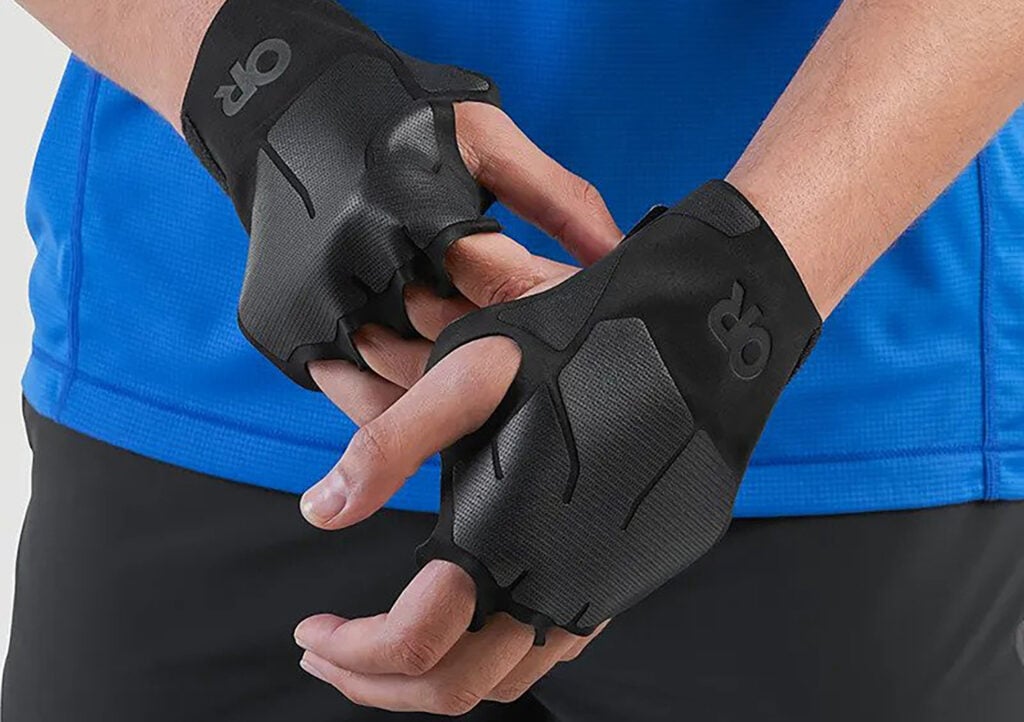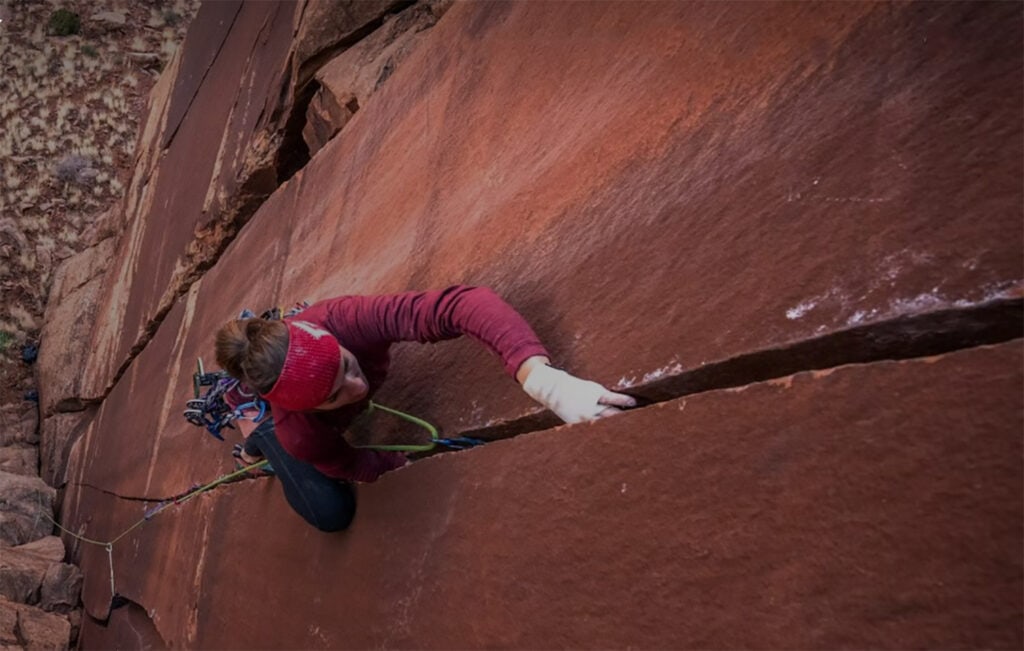The 5 Best Rock Climbing Gloves for Sweaty Hands
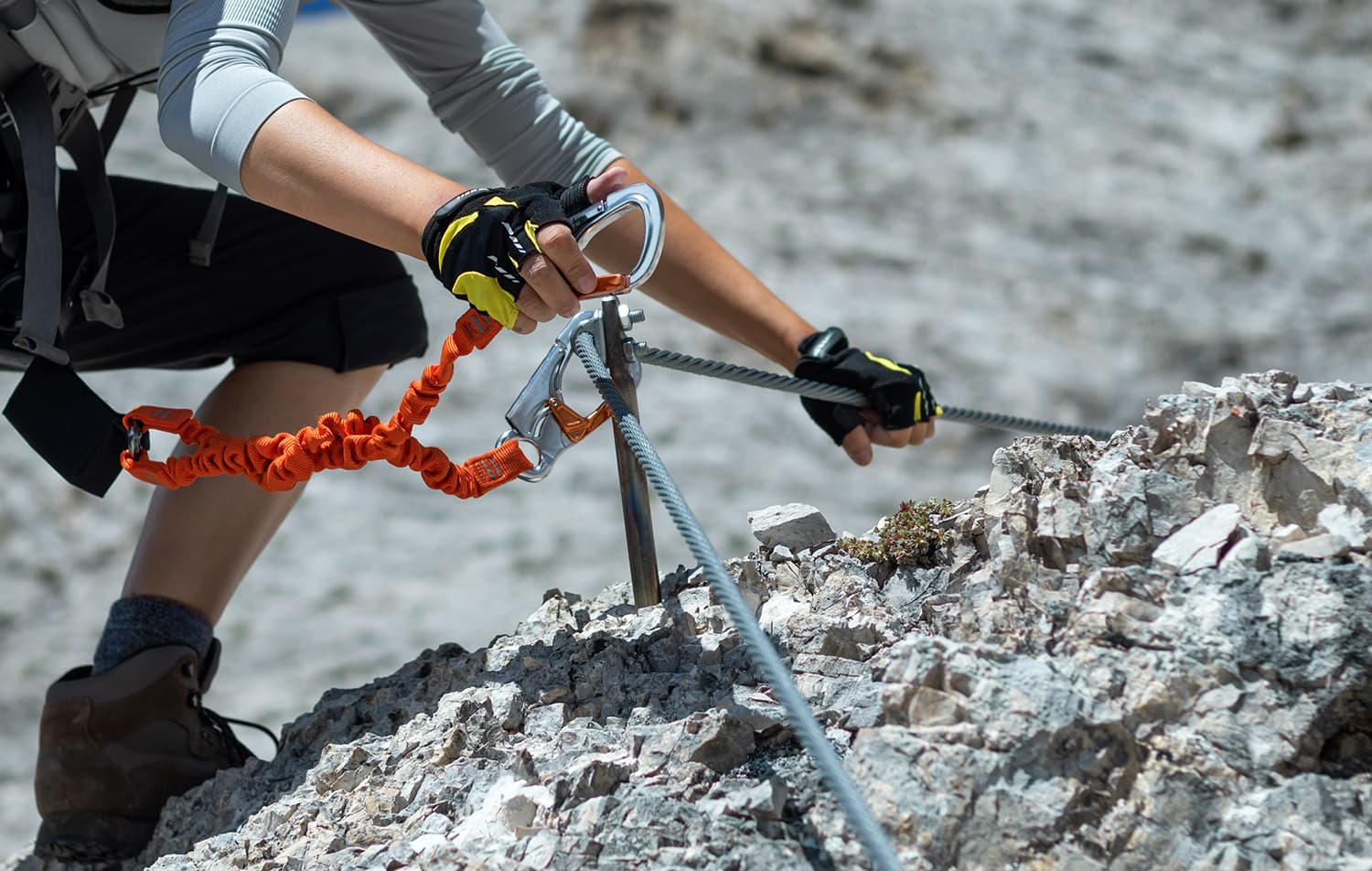
Published on: 10/13/2022
Introduction
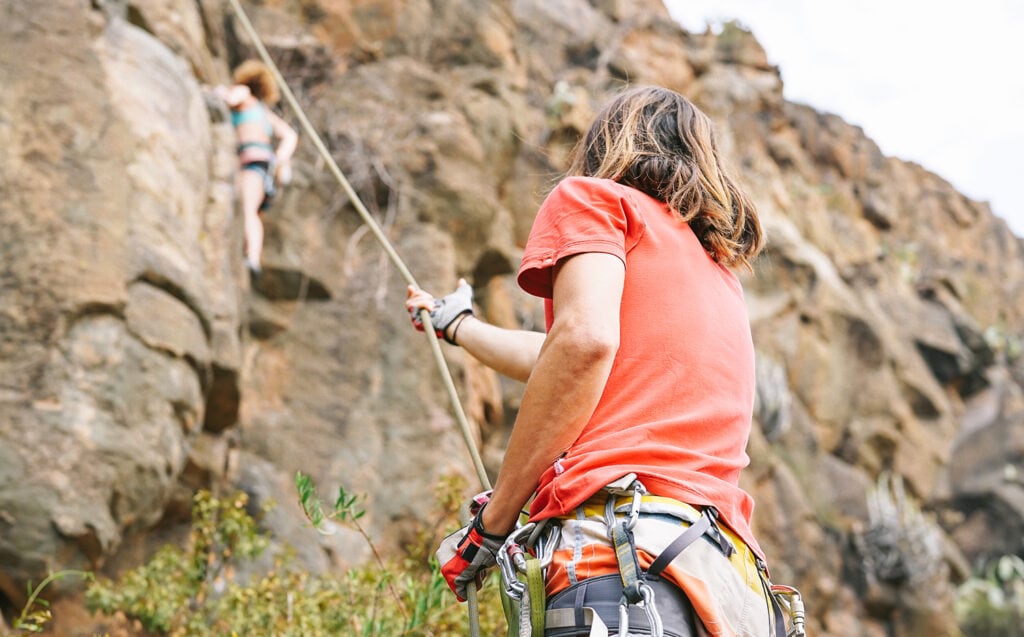
In the sport of rock climbing, your hands are arguably your most important tool. When we climb, we use our hands to grip holds, crimp, push, pull, and perform countless maneuvers and adjustments. As a result of this, your hands can take a real beating. This is especially true when you’re just getting started, and the skin of your hands is still adjusting to the pressures of rock climbing.
Another fairly common issue to run into when climbing is finding that your hands are, well, sweaty. This can happen for a number of reasons; you might have a condition like hyperhidrosis, which causes excessive sweating. Climbing in hot weather also tends to result in our hands sweating more than usual, for obvious reasons.
In any case, having overly sweaty hands when climbing can be problematic. When your hands sweat, getting a proper grip on holds is much harder. This can cause you to slip, which can be frustrating or even downright dangerous, depending on the situation. Many climbing gloves can further complicate the issue if they don’t offer adequate breathability.
While most climbers eschew rock gloves in favor of climbing bare-handed, gloves can be a real godsend in certain contexts. And, it’s more than possible to climb with gloves if you find that you struggle with sweaty hands while climbing. There are a number of gloves on the market that are lightweight while still offering excellent protection against abrasion and sun damage. In this guide, we cover some of our favorite glove models out there right now. We also discuss when you may want to consider climbing in gloves and what to look for in a new pair.
Our Selection of the Best Five Rock Climbing Gloves for Climbers with Sweaty Hands
Comparison Table
| Gloves | Protection | Use | Best Offer |
|---|---|---|---|
Black Diamond Crack Gloves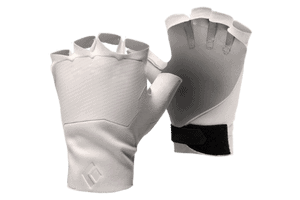 | Palm | Crack climbing | Check Prices → |
Outdoor Research Splitter II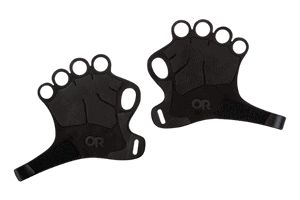 | Palm | Crack climbing | Check Prices → |
Black Diamond Crag Half-Finger Glove | Half-finger | Multi | Check Prices → |
Edelrid Work Glove Open | Half-finger | Multi | Check Prices → |
Petzl Cordex Belay Glove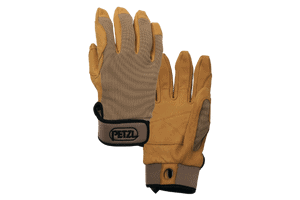 | Full-finger | Belaying | Check Prices → |
1. Black Diamond Crack Gloves
Natural-feeling and luxurious, these high-performance gloves from Black Diamond are our top pick if you’re looking for the best, lightest crack climbing gloves on the market
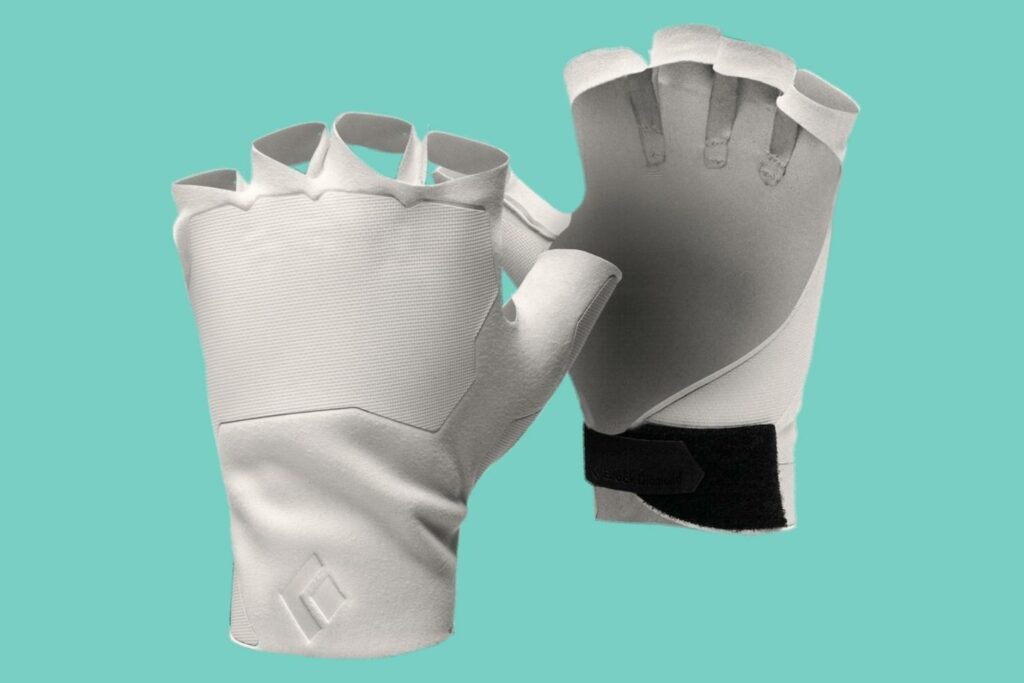
Our Analysis of the Black Diamond Crack Gloves
Say goodbye to tape gloves for good! Black Diamond’s CG are some of the best gloves we’ve seen for crack climbing to date. Not only do they provide excellent hand protection, but they use incredibly breathable synthetic leather. This makes them more than viable for extended use for climbers with sweaty hands looking for the best possible performance when rock climbing.
Overall, we’d recommend this offering by Black Diamond to anyone looking for the most light weight crack climbing gloves on the market.
Pros
Cons
2. Outdoor Research Splitter II
The Splitter II by Outdoor Research is our favorite low-profile model for larger hand sizes or for anyone looking for the most breathable climbing glove out there.

Our Analysis of the Outdoor Research Splitter II
More breathable than just about any other crack gloves, Outdoor Research’s Splitter II model is probably the best choice on this list if you want to keep your hands dry.
Reviewers with larger hands also tend to find the OR Splitter II to be far more forgiving in terms of fit than other crack climbing gloves. They also offer very respectable protection, despite having a very low profile build.
If you’re on the lookout for some of the most breathable climbing gloves on the market, then we recommend that you check out the Splitter IIs.
Pros
Cons
3. Black Diamond Crag Half-Finger Glove
These half-finger gloves offer an excellent balance between protection and flexibility and are great for aid climbing.
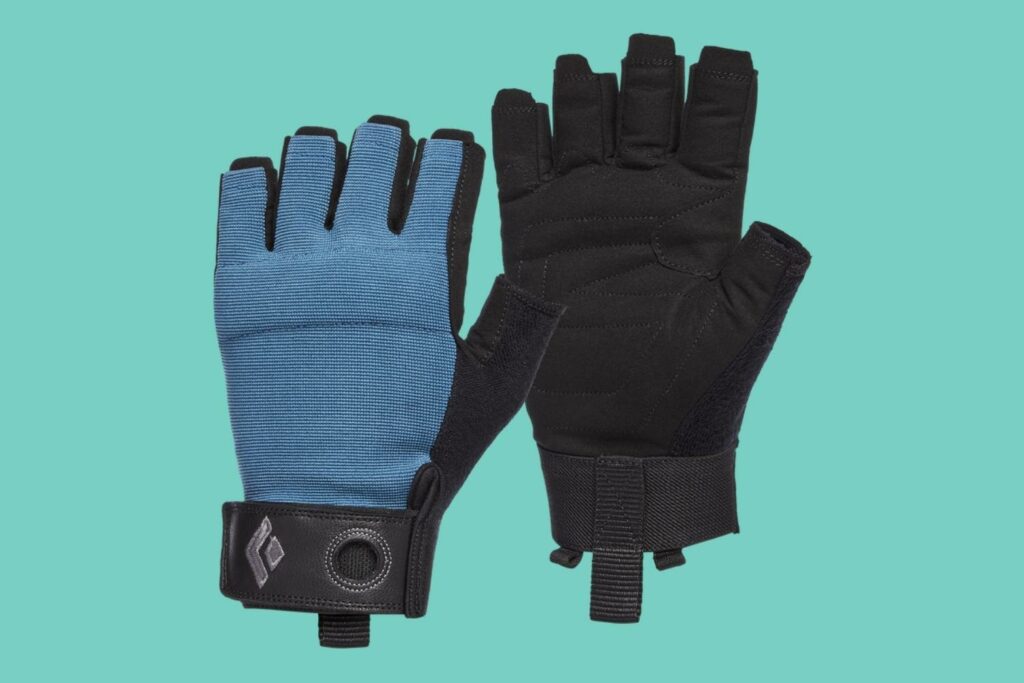
Our Analysis of the Black Diamond Crags
The Crag Half Finger Gloves use entirely synthetic, highly breathable material. This makes them a much better option for those with sweaty hands than, say, a traditional leather glove might be.
While their durability is less than ideal, and they could do a better job at protecting your palms and fingertips, the Crags are a great, lightweight, and versatile climbing glove.
These would be top of our list to recommend to anybody who is on the hunt for versatile, affordable gloves suitable for sweaty hands.
Pros
Cons
4. Edelrid Work Glove Open
Far and away the best model on this list for durability, the Work Glove’s super snug wrist closure means you won’t have to worry about sweaty hands getting in the way of your sends.
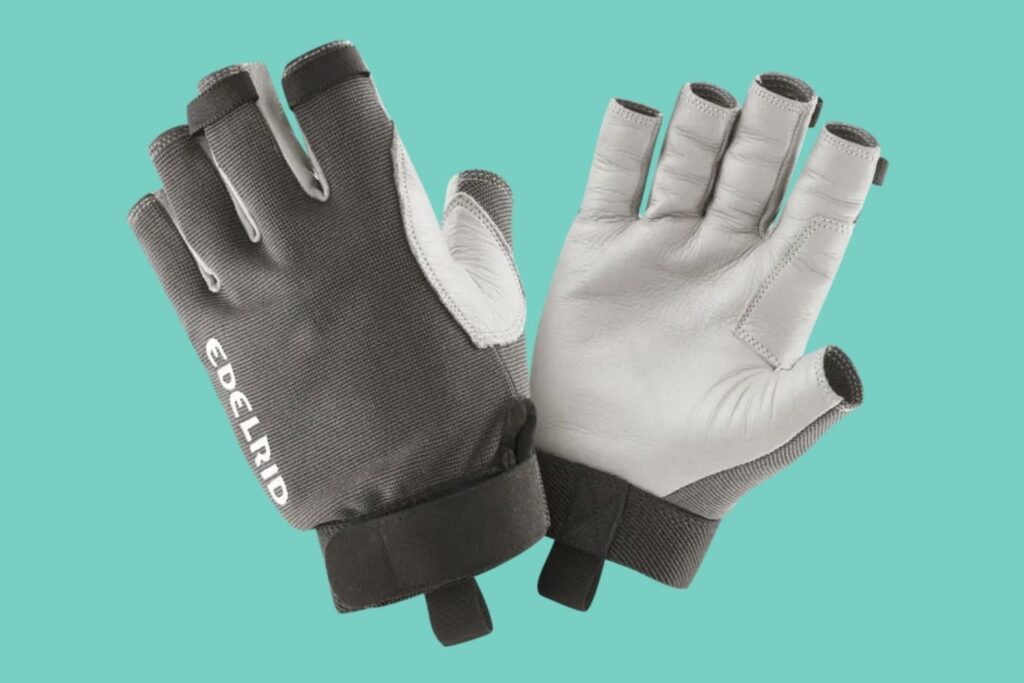
Our Analysis of the Edelrid Work Glove Open
If you’re searching for a highly durable, reliable climbing glove, then you needn’t look any further than the Edelrid Work Glove Opens. Made using quality leather and a synthetic backing, these gloves are comfortable, offer great protection, and are supportive.
While breathability isn’t their strong suit, the wrist closure on the Work Gloves does a great job at locking in and wicking away sweat. So, anyone with sweaty hands doesn’t need to be deterred from climbing in these gloves.
Pros
Cons
5. Petzl Cordex Belay Glove
We consider the Petzl Cordex to be the absolute most breathable belay glove on the market today.
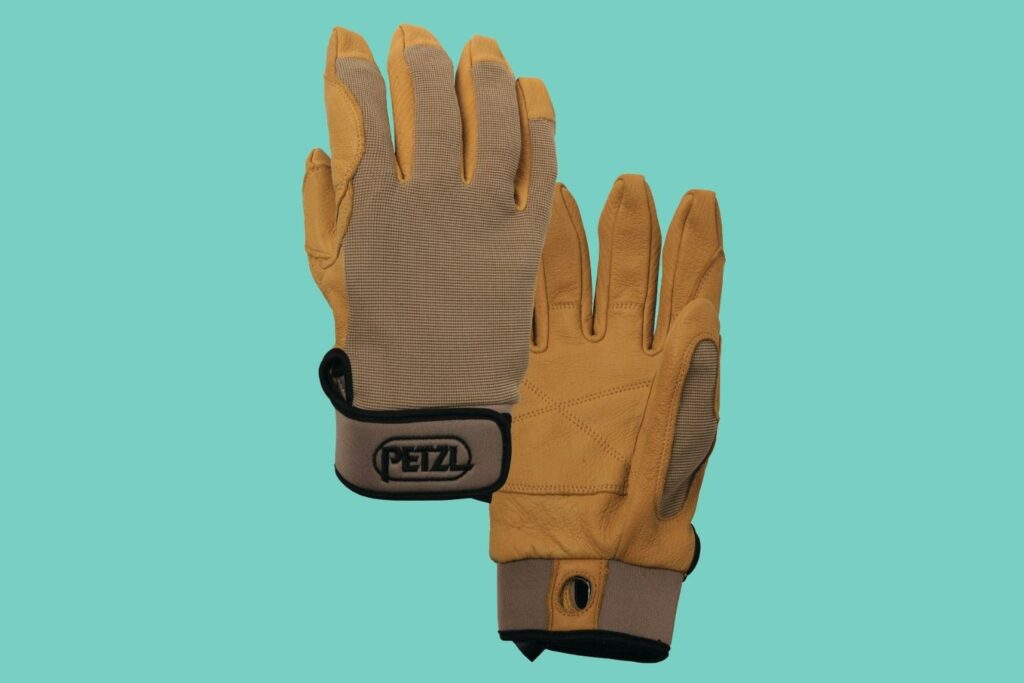
Our Analysis of the Petzl Cordex Belay Glove
Belay gloves are generally more heavy-duty than other types of climbing gloves, and this much is true of the Cordex by Petzl.
Despite that, Petzl has gone to great lengths to make these gloves far more breathable than belay gloves made by its competitors. This is largely achieved with the synthetic mesh backing, which lets your hands breathe while you belay.
As a result, these gloves are somewhat less protective than an all-leather model. However, if you’re looking for a truly breathable belay glove, you can’t beat the Petzl Cordex.
Pros
Cons
How to Pick the Best Rock Climbing Gloves for Sweaty Hands
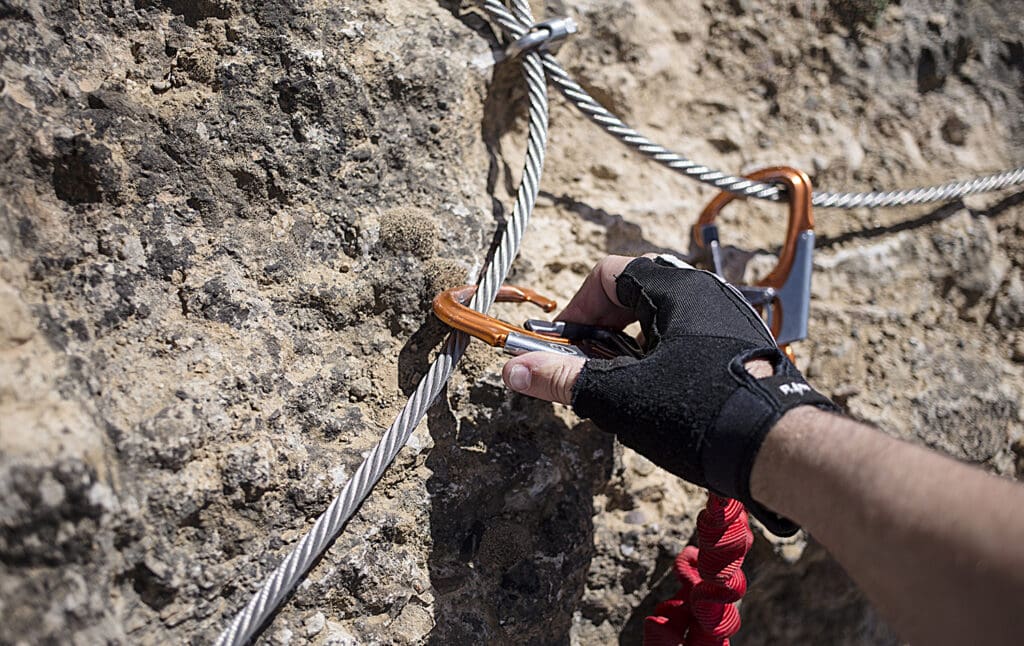
There’s an enormous range of climbing gloves out there to choose from. However, not all of them are appropriate for rock climbing, and some are far from suitable for climbers with especially sweaty hands. Below, we cover what to look for in a new pair of gloves if this is a concern of yours.
Anatomy of a Climbing Glove
Climbing gloves aren’t hugely dissimilar to any other type of sports glove. Generally speaking, climbing gloves are made from leather or synthetic materials and have different features to protect your hands from damage. For example, some climbing gloves have padding on the palms or knuckles. Climbing gloves generally have a wrist closure, which you use to keep them secure while climbing.
Many climbing gloves use a mesh backing to keep them more breathable. Some climbing gloves are full-fingered, meaning they cover your entire hand, while others are fingerless or half-fingered.
When to Use Climbing Gloves

There are certain styles of climbing where wearing gloves can be an important tool in mitigating injury to your hands. Crack climbing is probably harder on your hands than any other type of climbing, so extra protection for your skin is crucial. You might also want to consider using gloves when aid climbing to prevent rope burn and chafing on your hands.
Belaying is another situation where gloves are commonly worn. This is due to the fact that belaying can be very tough on the hands. Rope burn is a fairly common issue to run into while belaying due to the friction your hands are exposed to. Belay gloves are an easy way to mitigate this.
Finally, you might also want to consider climbing gloves if you’re new to the sport and your skin hasn’t adapted yet to climbing on rock. It takes time to develop callouses and for your body to adjust to rock climbing. Wearing gloves can be a great way to allow yourself to climb for much longer without getting worn out or having to stop due to blisters.
Pros and Cons of Using Gloves vs. Tape vs. Bare Hands
The use of climbing gloves has long been a topic of controversy in the climbing community. Many rock climbers pride themselves on the sport’s inherent minimalism; the notion of being able to scale seemingly indomitable cliffs, crags, and mountains with nothing but their bare hands and some rope is something that many climbers cling passionately to.
As such, the idea of using equipment deemed ‘unnecessary’ by some, like climbing gloves, can be contentious. Some climbers argue that you should simply climb until your skin toughens up rather than using gloves to protect your hands. While it’s true that bare-handed climbing gives you superior sensitivity and technical flexibility, there’s nothing inherently wrong with wanting maximum protection for your hands. We feel this is especially true when you have less climbing experience and are just trying different things – climbing should be fun, after all!
In Defence of Climbing Gloves
Furthermore, climbing with gloves has some objective advantages over climbing with tape or barehanded. For one, the total protection that gloves provide is easily greater than what you can get out of tape or callouses. We’d also argue that using a pair of reusable gloves is much more environmentally friendly than going through endless rolls of tape.
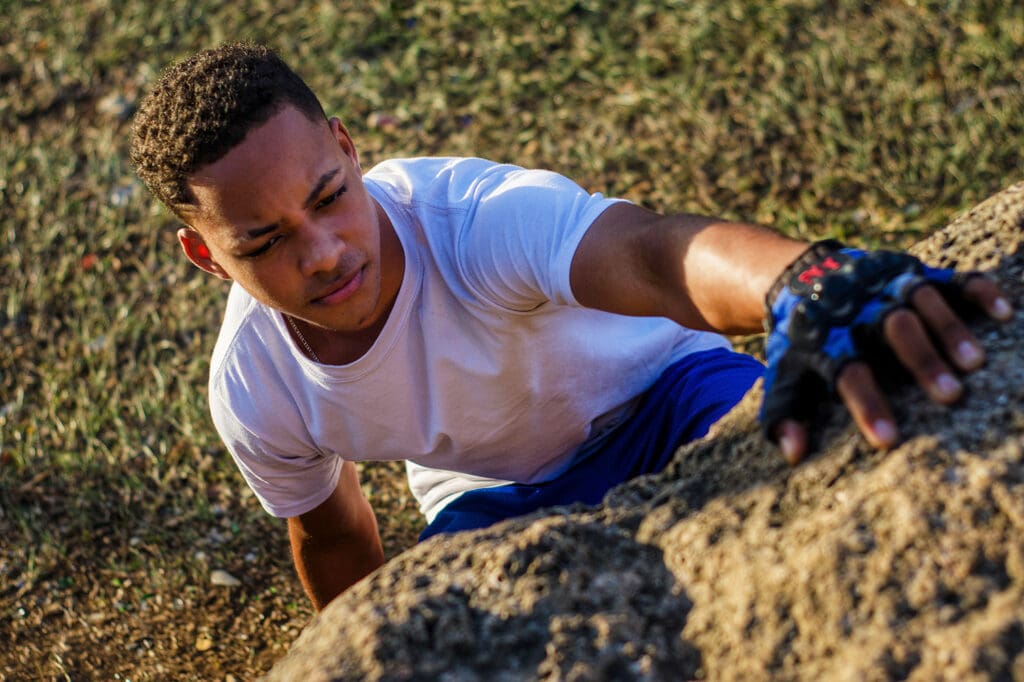
When Might Tape or Barehanded Climbing Be Better?
One important thing to keep in mind is that if you already tend to have sweaty hands, you might find that gloves make this worse. For instance, hyperhidrosis is a fairly common condition that causes excess sweating. While gloves can help you maintain your grip on the wall, you might run into issues with your gloves sliding around if your hands are sweating too much. You’ll likely to struggle significantly with leather climbing gloves, in particular, if this is the case for you.
If you find yourself struggling with sweaty palms, then bare-handed climbing whenever possible might be better for you than using gloves. Climbers based in hotter climates may find more success with specialized climbing chalk than with gloves. Using a combination of liquid and powdered chalk can be a great way to make your chalk last longer with sweaty hands.
One happy medium between gloves and barehanded climbing is using climbing tape. You can actually make ‘tape gloves,’ for instance. This involves covering the parts of your hand that need protection with tape. By doing so, you can keep your hands far cooler than they would be with climbing gloves. However, it’s worth noting that tape is far less durable than gloves are. For longer climbing sessions, you’ll likely find that you need to apply and reapply tape throughout the day.
Important Criteria When Looking For Climbing Gloves
If you struggle with sweaty hands when climbing and are on the hunt for new gloves, then you may want to keep some of the following criteria in mind. For one thing, ensure that the gloves you’re looking at using some kind of breathable fabric. Gloves made entirely of leather aren’t likely to be right for you if you’re looking to minimize hand sweat while climbing.
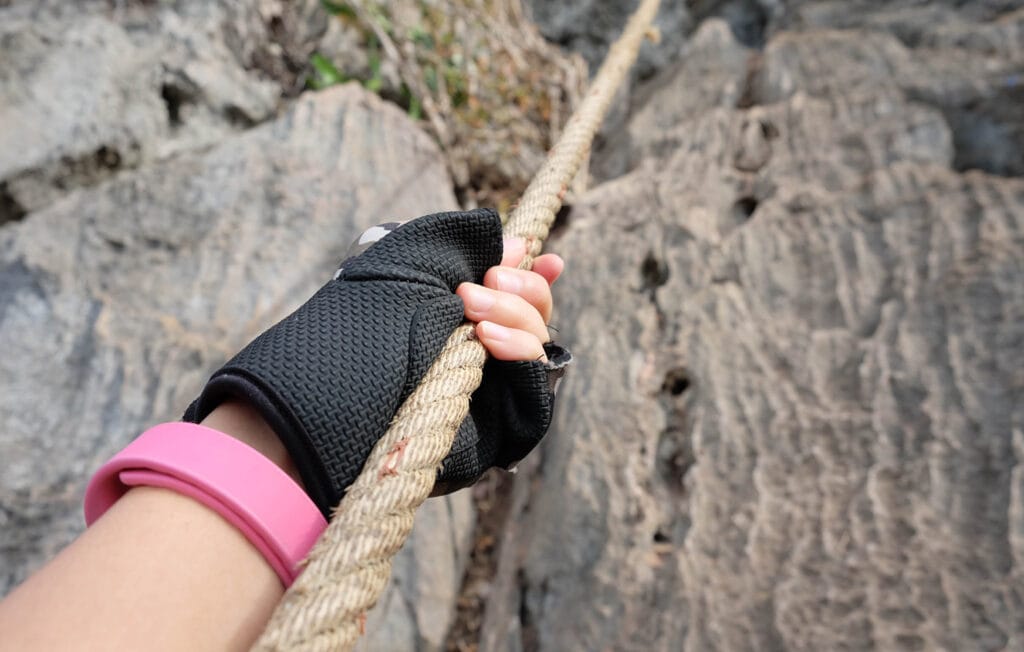
We’d also recommend that you be wary about investing in a pair of full-finger gloves if you struggle with extra sweaty hands. Unless it uses highly breathable materials, a full-fingered glove is likely to be too stuffy on hot days and will likely make your hands sweat even more.
Something else you might like to watch out for is the build quality of the gloves you’re considering. We recommend that you try to find climbing gloves made by a reputable brand. Narrowing your search like this should help you find a quality glove that you can be confident in investing in.
Our Top Tips For Finding the Perfect Climbing Gloves For You
Purchasing climbing equipment can feel daunting, so we’ve compiled some handy tips to help you search for a pair of new gloves. If possible, we recommend that you visit a climbing shop in person to try on different gloves and see how they feel. This is the best way to help you get the closest possible fit in your new gloves. Also, you can ask the store staff for personalized advice on which type of glove might best suit you.
Finally, think about the kind of environment that you will be climbing with your new gloves in. What type of climbing surface or surfaces will you be using them on? Will you be climbing in warmer or cooler weather? Will crack climbing gloves be sufficient, or do you need something that provides finger protection, too?

FAQs
Whether or not you wish to wear gloves while climbing is up to you. Some athletes appreciate how gloves protect their hands and allow them to climb for longer without needing a break. On the other hand, many climbing purists find gloves to feel unnatural and deem them unnecessary.
Many of the best climbing gloves are fingerless models. Not only do fingerless gloves tend to provide great palm protection, but they are usually much cooler than regular climbing gloves. This makes fingerless gloves an excellent option for anyone whose hands get especially sweaty when climbing.
No, it’s entirely possible to climb cracks without any gloves. However, you may want to consider crack climbing gloves to protect the skin of your hands from injury. Tape gloves are an excellent alternative to crack climbing gloves if you’d prefer not to invest in a pair.
Generally, as long as you have a comfortable fit with them, you want a pair of crack climbing gloves to be as tight as possible. A closer fit will help you maintain maximum friction between the crack and your
We’d recommend that most athletes wear belay gloves, especially if they’re new to climbing. Belay gloves keep your hands protected from rope burn and other injuries, but they also help you get a good grip on the rope as you belay.

